Gorakhpur, UTTAR PRADESH :
The book is a harrowing tale of a doctor’s ordeal and gives a compelling account of the tragic deaths of several children and the disturbing events that ensued.
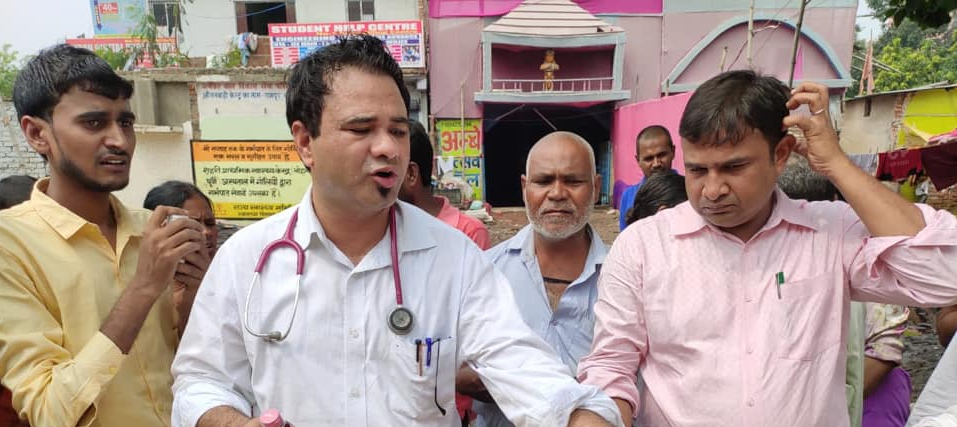
Gorakhpur:
The 2017 oxygen shortage tragedy at Gorakhpur’s BRD Medical College that led to the deaths of more than a hundred children was not a random accident but the outcome of the administration’s apathetic and insensitive attitude towards government hospitals. The aftermath of the incident also exposed how the government machinery, instead of learning from such horrific accidents, works to suppress the truth, protect the culprits and punish those who try to expose the reality.
The reportage on the oxygen fiasco meanwhile rendered it synonymous with the identity of Dr Kafeel Khan, who was then an assistant professor in the hospital’s Department of Paediatrics. The incident and the ensuing fate of Khan was widely reported in the media.
But what actually happened and who were the real culprits? Were they shielded by the powers that be? Those who knew the truth have either kept mum on the issue or have sided with the government’s narrative. The government has made claims like, “The hospital did have an oxygen crisis but that’s not what killed the children”, “The children died because they were gravely ill”, “Children die of encephalitis in July and August every year” and that the government and its ministers or senior officials cannot to be blamed for the deaths as the college administration was negligent. Khan, the government said, was solely responsible because he failed to inform his seniors about the oxygen crisis and had committed medical negligence and used to practice privately.
Khan was sacked last month , four years following the incident. Two doctors and four employees of BRD Medical College, who were also accused of negligence, have been reinstated. R.K. Mishra, who was the principal of the college at the time of the deaths, and Ppharmacist Gajanand Jaiswal have retired after being reinstated. Little is known of the whereabouts of Manish Bhandari, the owner of Pushpa Sales, the oxygen supplier, ever since he was released from jail.
The government did not compensate the families of the children who died in the tragedy, claiming that their deaths were not caused by oxygen shortage.
The terrible incident is no longer talked about, except when it is brought up in conjunction with news related to Dr Kafeel Khan.
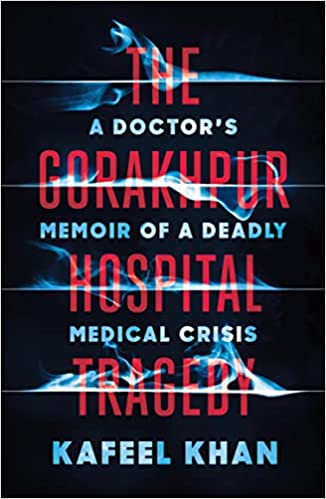
The Gorakhpur Hospital Tragedy: A Doctor’s Memoir of a Deadly Medical Crisis
Pan Macmillan (December 2021)
Recently, Khan’s 300-page book titled The Gorakhpur Hospital Tragedy: A Doctor’s Memoir of a Deadly Medical Crisis was published by Pan Macmillan India, reinvigatoring a discussion on the deaths.
In the book, Khan describes a series of incidents beginning on the dreadful night when the hospital ran out of oxygen to the day of his arrest, subsequent imprisonment and his dismissal from service more than four years later. The book not only weaves together the scattered strands of information surrounding the oxygen shortage tragedy of the BRD Medical College on August 10, 2017 but also brings to the fore many new facts which remained unknown till now.
The oxygen fiasco was reported in both national and international media. While it is true that the incident remained in the news a long time afterwards, most of these speculations only went on to further mystify and blur the facts instead of providing clarity. The book tries to blow the lid off the attempts to conceal the truth behind the incident in a ‘calculated manner’ and uncovers the system’s attempts to make a doctor the scapegoat to cover up its failure.
The book also highlights various aspects of Khan’s personal life. We come to know that his father was an engineer in the irrigation department. Kafeel Khan was brought up in an open-minded atmosphere and spent his early days in a locality where residents hailed from different religious backgrounds. They celebrated Holi as zealously as Eid. On Diwali, he narrates, his family received many sweets from their Hindu neighbours which he would carry in his school tiffin for an entire week.
From his family, the story quickly progresses to the events of August 10, 2017. On the fateful night, Khan received a WhatsApp message on his mobile about depleting oxygen levels in the encephalitis ward. He was on leave that day as his sister was visiting the family from Oman and he wanted to spend time with her. But when he received the message, he decided to immediately go to the hospital. On his way, he kept calling his superiors at the medical college. While most of his calls went unanswered, those who did pick up failed to grasp the gravity of the situation and tried to pass the buck.
In his book, Khan gives telling details of the situation he witnessed in the ward that night and how he handled it. He describes the wailing and pleading parents while their children battled for life and the utter helplessness of the doctors, nurses and ward boys. There were 313 children admitted in the hospital’s pediatric and neonatal intensive care units that night. At 7:30 pm, the oxygen plant had run out of oxygen and the ventilators began sounding the warning beeps. As a contingency arrangement, 52 jumbo cylinders kept in the hospital reserve were installed, which were exhausted within four hours and the oxygen supply was completely cut off to the wards, including the encephalitis ward. By the time Khan reached the hospital, eight children had already died.
He and his colleagues immediately started giving oxygen from Ambu bags to the children on ventilator support. The condition of all the children in the ward was assessed and oxygen from Ambu bags was given to those who needed oxygen the most. A three-year-old girl’s condition deteriorated and despite the staff’s best efforts, could not be saved. The NICU witnessed similar chaotic scenes. The relatives of the patients, who had been informed about the lack of oxygen, were either yelling at the hospital staff or begging them to save their children.
Meanwhile Khan was faced with the dual challenge of treating the deteriorating condition of the children, on one hand, and arranging for oxygen cylinders on the other. A truck carrying a jumbo cylinder was on its way from Imperial Gas Limited in Faizabad but there was no sign of it until 1 am. Till then, no senior officer of the BRD Medical College had reached the hospital. In their absence, Khan decided to fetch three jumbo cylinders from a nearby hospital in his private vehicle. He then approached eight more hospitals for help, ferried as many cylinders as he could arrange and tried to replenish the oxygen supply. But it was not enough. The encephalitis ward was consuming 16 jumbo cylinders every 45 minutes. The truck that arrived from IGL Faizabad at 2 am brought only 50 cylinders. Kafeel arranged for a truck with the help of central oxygen operator Balwant, and sent an outsourced worker to the Khalilabad plant paying Rs 20,000 from his own pocket. The oxygen plant had agreed to supply jumbo cylinders at Rs 350 per cylinder.
Despite being informed of the urgent need for oxygen, a plant in Gida refused to supply oxygen saying that its contract with the college had been terminated and handed over to IGL Faizabad. It would supply oxygen only after the contract has been renewed, the plant said.
Despite Khan and his team’s night-long efforts to save the children and arrange cylinders, 23 children in the PICU and NICU and 18 adult patients in the medicine ward had succumbed by 10 am the next day.
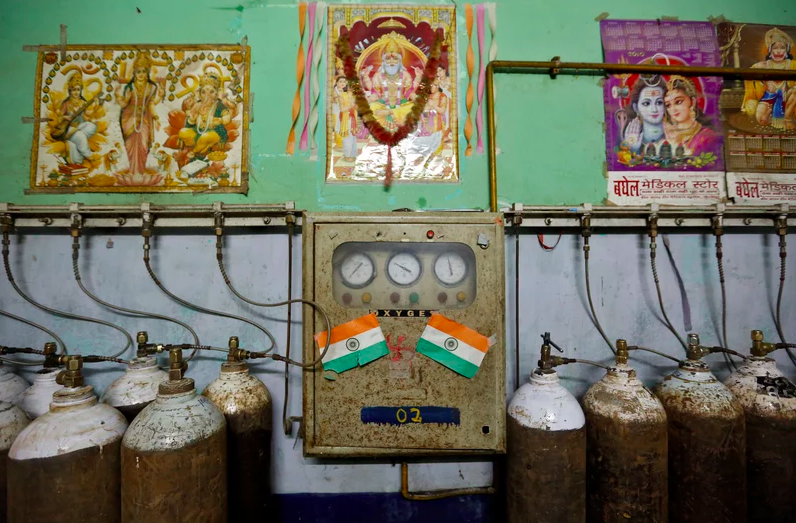
When there was a shortage of vehicles to cart the jumbo cylinders, Khan reached out to the Sashastra Seema Bal (SSB) stationed in the Fertilizer Campus on the morning of August 11 and contacted the DIG to provide a truck and cylinders. The SSB did not have jumbo cylinders, but they provided a truck and 12 jawans so that cylinders could be swiftly transported from the plant to the medical college.
According to the details in the book, on the afternoon of August 11, the then district magistrate Rajiv Rautela contacted Khan and after being apprised of the whole situation assured that oxygen would be provided. He asked the Gida plant, which had earlier refused to entertain Kafeel’s request, to supply oxygen. Later, 50 jumbo cylinders arrived from IGL Faizabad in two trips. Kafeel also contacted the chief medical officer and the additional director (health), urging them to help solve the crisis. One said he was in a meeting and the other asked Khan to contact the chief medical superintendent regarding the arrangement of cylinders. One of these officers later became part of the committee that was formed to investigate the tragedy.
In the afternoon, a professor from the Department of Paediatrics reached the ward followed by the head of the department and the chief medical superintendent of the Nehru Hospital. Together, they wrote a letter to the principal of the BRD Medical College, urging him to arrange medical oxygen.
By the evening of August 11, the news of children dying due to oxygen shortage had spread like wildfire and media persons began pouring in at the BRD Medical College. By then, a few local journalists and photographers had already reached the College and began reporting on the crisis. The district magistrate issued the first official statement about the incident in a press conference at 7:30 pm that day and announced the formation of a committee to investigate the deaths. This committee was asked to submit its report within 24 hours.
Initially, the reports in media and on social media hailed Kafeel as a hero for his efforts to muster up oxygen cylinders using his personal resources and save the lives of children. On August 12, the state health minister Siddharth Nath Singh and medical education minister Ashutosh Tandon reached the college. Singh, in a press conference, denied the death of any child due to lack of oxygen and made the insensitive ‘children die every year in August‘ remark. The statement was widely condemned.
On August 13, a tanker of liquid oxygen arrived at the hospital at 1 am and the supply was restored. Kafeel, who had tirelessly spent 48 hours on rigorous duty since August 10, finally returned home only to wake up to a fresh twist the next morning. A new tale had been spun and a fresh narrative was played out in the media.
In the morning, J.P. Nadda and chief minister Yogi Adityanath arrived at the BRD Medical College and Khan was summoned. He reached the hospital hoping to receive a pat on the back for his efforts but he was in for a rude shock and suddenly found himself in the crosshairs.
According to Khan, the moment he appeared before the chief minister, he said in a reprimanding tone, “Tu hai Dr Kafeel Khan?” (So, you are Dr Kafeel Khan?)
“Yes, Sir.”
“Tune cylinder ka arrangement kiya tha?” (Are you the one who arranged cylinders?)
“Yes, Sir.”
“Ye 4-5 cylinder la kar tu ne kitni jaan bacha li? Tu sochta hai cylinders ki vyvastha kar ke tu bohot bara hero ban gaya; dekhta hoon tujhe.” (How many lives did you save with a few cylinders? Do you think by arranging cylinders you became a hero? I will take care of you.)”
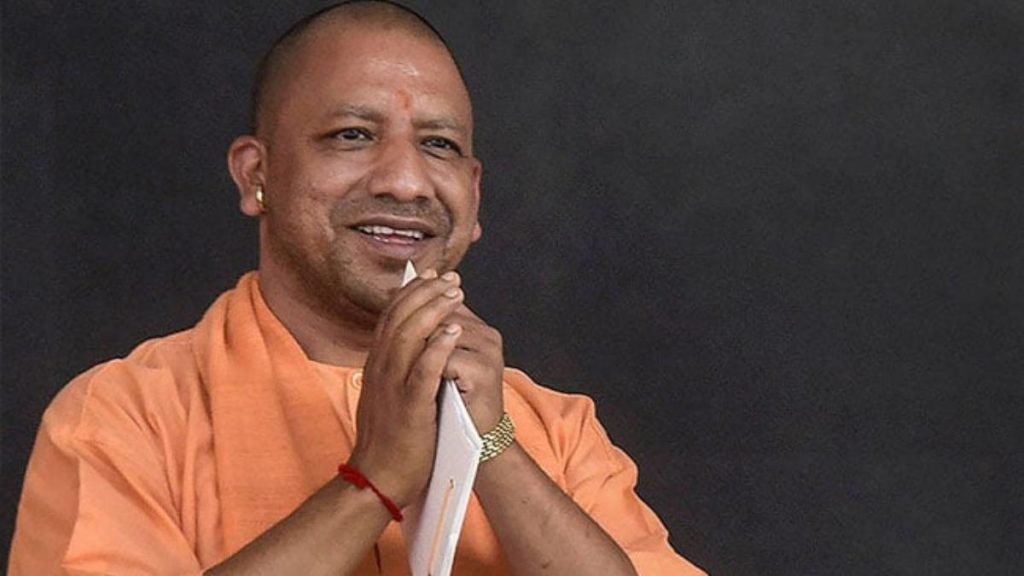
Khan was suddenly the villain, accused of leaking the news of oxygen shortage to the media. However, when he tried to speak up and provide a clarification, senior officers stopped him from doing so.
In the press conference, the chief minister dismissed the claim that the children died owing to a dearth of oxygen. He announced the formation of a committee headed by the chief secretary to probe the incident and said that its report would be submitted in a week.
As soon as the press conference was over, media persons flocked the hospital of Khan’s wife. A mob also attacked the hospital and a showroom owned by Khan’s brother, pelting stones and vandalising them. On social media, Khan was vilified as an ‘oxygen thief’, and a ‘pawn of the opposition leaders’. The TV news channels began referring to him as the head of the paediatric department, the deputy principal, the superintendent of the hospital, blaming him entirely for the disaster.
Khan was advised to take leave until the turmoil subsided. On August 16, the report of the committee constituted by the DM was submitted, which did not fix the responsibility on Khan but also failed to mention, let alone laud Khan’s efforts to arrange oxygen cylinders at such a critical time.
Finally, on August 21, the report of the committee headed by the chief secretary came out and an FIR was lodged against nine people, including Khan and everyone was gradually arrested.
The police began raiding his house daily, making searches and harassing the family members. His sister’s house in Lucknow was also raided and his brother was taken into custody. He decided to surrender and finally did so at the Special Task Force office in Lucknow. The STF brought him to Gorakhpur and handed him over to the Gorakhpur police, who put him in jail.
The next few pages of the book record a horrendous account of Khan’s seven-month long stay in jail – an 800-prisoner facility with 1,897 prisoners in it.
In jail, he met several high-profile prisoners – Kaka, D. Ram, V. Singh, Shailesh, Vishwa and also ‘Mantriji’ who is serving a life sentence for the murder of a poetess. Most of them showed Khan kindness. Despite all the media propaganda, they treated him with respect for being a good Samaritan and responsible doctor who tried to save the lives of children. Khan writes that most of the undertrial prisoners spend long periods in jail in the hope of being freed or granted bail but 99% of them are met with disappointment as cases remain in limbo for years.
Khan also details a first-hand account of corruption inside the prison walls. Any prisoner can avail the facilities that he can afford. Under this covert system, rates are fixed for kachchi baithki and pakki baithki – levels of evading laborious chores in jail. Then there are rates of bidi, cigarette, vegetables, eggs, bottled water as well as meeting with relatives. To avail such luxuries, one has to keep one’s mouth shut – besides abiding by the other rules. Based on hierarchy of caste, religion, connections and nature of crime, the dark underbelly of the prison is governed by a handful prisoners.
While awaiting bail, Khan tried to piece together the episodes of the oxygen tragedy. From jail, he contacted everyone including Manish Bhandari, the director of Pushpa Sales, the college principal Mishra, and Dr Satish. Finally, he saw the whole picture. He learnt that both the Gida gas plant, which had refused to supply oxygen to the hospital despite being aware of the deaths of children, as well as IGL Faizabad with which the hospital had signed a contract in 2017, had close relations with the ruling party leaders. Also, Khan claims, Pushpa Sales had not only failed to pay the dues to the top officials of health and administration but also to line the pockets of various ministers, a matter which was brought up in several official meetings. Hence, the authorities behaved in a lackadaisical manner while the children were gasping for breath. Later, a hunt was launched for ‘a neck to fit the noose’ and a communal government found Khan as the perfect scapegoat, he says.
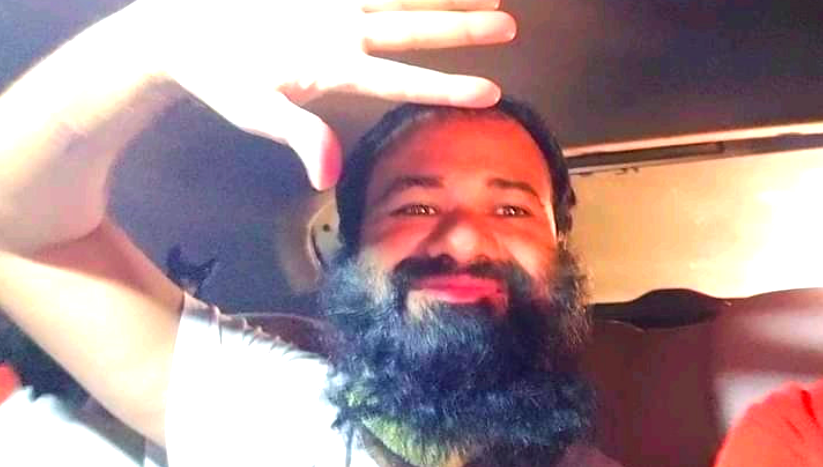
The final section of the book describes Khan’s ordeal after his release from jail, various charges levelled against him and his re-arrest. He was arrested from the Bahraich district hospital, where he had gone to investigate the death of children admitted for encephalitis. Later, charges under the National Security Act were slapped on him for a speech he had delivered during an anti-CAA-NRC protest at the Aligarh Muslim University. He was released after the Allahabad high court quashed the NSA charges.
However, despite getting a clean chit on two key charges in the departmental inquiry of the oxygen shortage incident, he was sacked. The book has several more details. An entire chapter is dedicated to his rural health campaign, under which he organised medical camps, especially creating awareness about encephalitis, locally known as chamki fever, in various flood-affected parts of Bihar and Assam.
source: http://www.thewire.in / The Wire / Home> Book> Rights / by Manoj Singh / December 19th, 2021








